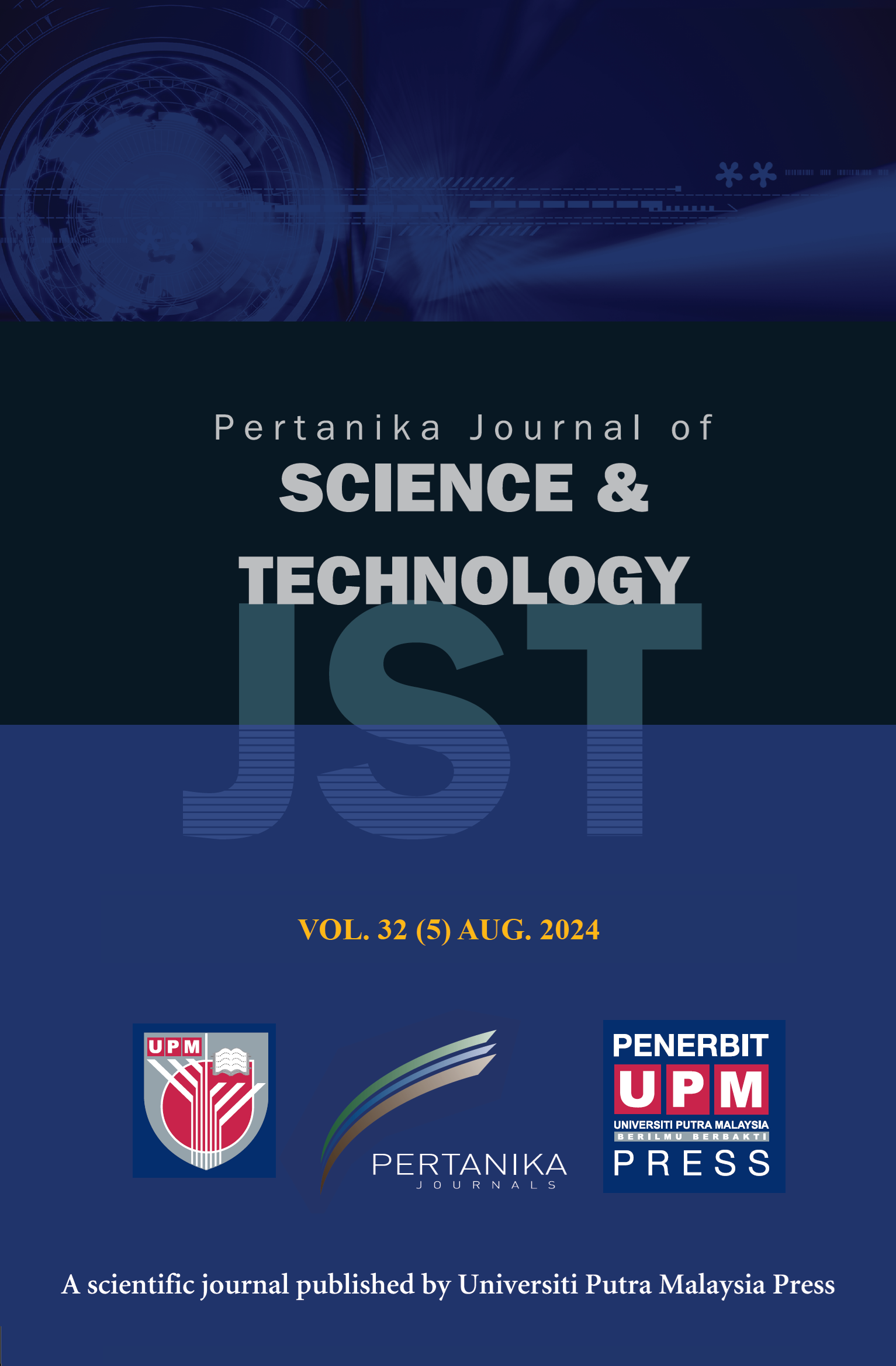PERTANIKA JOURNAL OF SCIENCE AND TECHNOLOGY
e-ISSN 2231-8526
ISSN 0128-7680
J
J
Pertanika Journal of Science & Technology, Volume J, Issue J, January J
Keywords: J
Published on: J
J
-
Adick, C. (2018). Bereday and Hilker: Origins of the ‘four steps of comparison’ model. Comparative Education, 54(1), 35-48. https://doi.org/10.1080/03050068.2017.1396088
-
Bakken, A. S. (2019). Questions of autonomy in English teachers’ discursive practices. Educational Research, 61(1), 105-122. https://doi.org/10.1080/00131881.2018.1561202
-
Bereday, G. Z. (1967). Reflections on comparative methodology in education, 1964-1966. Comparative Education, 3(3), 169-287. https://doi.org/10.1080/0305006670030304
-
Bodlalo, L. H., Sabbaghan, M., & Jome, S. M. R. E. (2013). A comparative study in green chemistry education curriculum in America and China. Procedia - Social and Behavioral Sciences, 90(InCULT 2012), 288-292. https://doi.org/10.1016/j.sbspro.2013.07.093
-
Chen, X., de Goes, L. F., Treagust, D. F., & Eilks, I. (2019). An analysis of the visual representation of redox reactions in secondary chemistry textbooks from different chinese communities. Education Sciences, 42(9), 1-16. https://doi.org/10.3390/educsci9010042
-
Chiappetta, E. L., & Fillman, D. A. (2007). Analysis of five high school biology textbooks used in the United States for inclusion of the nature of science. International Journal of Science Education, 29(15), 1847-1868. https://doi.org/10.1080/09500690601159407
-
Eilks, I., & Chen, X. (2019). An analysis of the representation of practical work in secondary chemistry textbooks from different Chinese communities. Science Education International, 30(4), 354-363. https://doi.org/10.33828/sei.v30.i4.13
-
Eilks, I., & Hofstein, A. (2013). Teaching chemistry–a studybook: A practical guide and textbook for student teachers, teacher trainees and teachers (I. Eilks & A. Hofstein, Eds., 1st ed.). SensePublishers. https://doi.org/https://doi.org/10.1007/978-94-6209-140-5
-
Hoque, K. E., Kenayathulla, H. B., Subramaniam, M. V., & Islam, R. (2020). Relationships between supervision and teachers’ performance and attitude in secondary schools in Malaysia. SAGE Open, 10(2), 1-11. https://doi.org/10.1177/2158244020925501
-
Jegstad, K. M., & Sinnes, A. T. (2015). Chemistry teaching for the future: A model for secondary chemistry education for sustainable development. International Journal of Science Education, 37(4), 655-683. https://doi.org/10.1080/09500693.2014.1003988
-
Johnstone, A. H. (1991). Why is science difficult to learn? Things are seldom what they seem. Journal of Computer Assisted Learning, 7(2), 75-83. https://doi.org/10.1111/j.1365-2729.1991.tb00230.x
-
Kubiatko, M., Balatova, K., Fancovicova, J., & Prokop, P. (2017). Pupils’ attitudes toward chemistry in two types of Czech schools. Eurasia Journal of Mathematics, Science and Technology Education, 13(6), 2539-2552. https://doi.org/10.12973/EURASIA.2017.01239A
-
Lepik, M., Grevholm, B., & Viholainen, A. (2015). Using textbooks in the mathematics classroom – the teachers’ view. Nordic Studies in Mathematics Education, 20(3-4), 129-156.
-
Mahaffy, P. (2011). The human element: Chemistry education’s contribution to our global future. In J. Garcia-Martinez & E. Serrano-Torregrosa (Eds.), The chemical element: Chemistry’s contribution to our global future (1st ed., pp. 131-157). Wiley-VCH Verlag GmbH & Co. KGaA. https://doi.org/10.1002/9783527635641.ch4
-
Merriam, S. B. (2009). Qualitative research:A guide to design and implementation (2nd ed.). Jossey-Bass Publishers.
-
Middlecamp, C. H. (2019). Sustainability in the chemistry curriculum: A call for action. Israel Journal of Chemistry, 59(6), 504-513. https://doi.org/10.1002/ijch.201800069
-
Okunuga, R. O., & Ajeyalemi, D. (2018). Relationship between knowledge and skills in the Nigerian undergraduate chemistry curriculum and graduate employability in chemical-based industries. Industry and Higher Education, 32(3), 183-191. https://doi.org/10.1177/0950422218766913
-
Österlund, L. L., Berg, A., & Ekborg, M. (2010). Redox models in chemistry textbooks for the upper secondary school: Friend or foe? Chemistry Education Research and Practice, 11(3), 182-192. https://doi.org/10.1039/C005467B
-
Peng, L. M. (2019). Survival out of the system: The research of Malaysian Independent Chinese Secondary Schools. Nan Jing Normal University.
-
Rusek, M., & Vojíř, K. (2019). Analysis of text difficulty in lower-secondary chemistry textbooks. Chemistry Education Research and Practice, 20(1), 85-94. https://doi.org/10.1039/c8rp00141c
-
Set, S., David, F., Sieng, S., & Kita, M. (2015). Cambodian student competencies in chemistry at lower secondary school compared to regional neighbors and Japan. Kyōiku Jissen-gaku Ronshū, 16(3), 169-181.
-
Sharma, S., & Al-Sinawai, S. (2019). Attitudinal differences towards instructional supervision: A study of teacher beliefs and supervisory behaviour in Malaysia. International Education Studies, 12(8), 106-115. https://doi.org/10.5539/ies.v12n8p106
-
Siah, P. C., Ong, S. B. C., Tan, S. M., & Sim, C. P. (2015). Perception on Chinese values: A comparison of Chinese secondary students studying at national secondary schools and Chinese independent schools in Malaysia. The Social Science Journal, 52(1), 62-68. https://doi.org/10.1016/j.soscij.2014.08.006
-
Sjostrom, J., & Talanquer, V. (2014). Humanizing chemistry education: From simple contextualization to multifaceted problematization. Journal of Chemical Education, 91(8), 1125-1131. https://doi.org/10.1021/ed5000718
-
Treagust, D., Chittleborough, G., & Mamiala, T. (2003). The role of submicroscopic and symbolic representations in chemical explanations. International Journal of Science Education, 25(11), 1353-1368. https://doi.org/10.1080/0950069032000070306
-
Vojíř, K., & Rusek, M. (2021). Preferred chemistry curriculum perspective: Teachers’ perception of lower-secondary school textbooks. Journal of Baltic Science Education, 20(2), 316-331. https://doi.org/10.33225/jbse/21.20.316
-
Wei, B. (2019). Reconstructing a school chemistry curriculum in the era of core competencies: A case from China. Journal of Chemical Education, 96(7), 1359-1366. https://doi.org/10.1021/acs.jchemed.9b00211
-
Wei, B., Chen, B., & Mai, Y. (2019). Examining chemistry teachers’ perceptions of their interaction with curriculum materials: A quantitative approach. Journal of Baltic Science Education, 18(2), 197-208. https://doi.org/10.33225/jbse/19.18.197
-
Yunus, F. W., & Ali, Z. M. (2013). Attitude towards learning chemistry among secondary school students in Malaysia. Journal of Asian Behavioural Studies, 11(3), 1-11. https://doi.org/10.21834/ajbes.v3i9.61
ISSN 0128-7680
e-ISSN 2231-8526




